This page contains the AQA GCSE Physics P9 Motion Questions and kerboodle answers for revision and understanding. This page also contains the link to the notes and video for the revision of this topic.
9.1 Speed and Distance Time Graphs AQA GCSE Physics P9 Motion Kerboodle Answers : Page No. 135
1 a) i. For an object travelling at constant speed the distance is the length travelled by an object from a particular point. S.I Unit =
It is a scalar quantity.
ll. the gradient of its distance-time graph is basically the slope of a graph. It is calculated as the change in one quantity with respect to another quantity.
For a distance-time graph
Gradient =, which is equal to speed.
b. i. Distance travelled by X in 1000 seconds = 30,000m
Therefore, speed = distance / time
= 30,000/1000 = 30m/s.
ii. Z stopped for = 1000-500 = 500 sec.
iii. average speed of Z for the 1500s journey = total distance covered / total time taken
= 20,000 / 1500 = 40 / 3 = 13.33 m/s
2. A vehicle on a motorway travels 1800 m in 60s.
a. the average speed of the vehicle in m = 1800 / 60 = 30 m/s
b. Distance travelled = speed * time = 30 * 300 = 9000 m
c. it would take110 sec to travel a distance of 3300m at this speed, Time = distance / speed = 3300 / 30 = 110 sec
3. A car on a motorway travels a certain distance in six minutes at a speed of 21 m/s .A coach takes seven minutes to travel the same distance. Distance and the speed of the coach = 21 * 360 = 7560 m, speed of the coach = distance / time = 7560 / 420 = 18m/s
4. a. A train takes 2 hours and 40 minutes to travel a distance of 360 km.
The average speed of the train in meters per second on this journey, Time = 160 * 60 = 9600 s
distance travelled = 360 * 1000 = 360000 m
average speed of the trains = 360000 / 9600 = 37.5 m/s
b. The train travelled at a constant speed of 40m/s for a distance of 180km. time taken = 180000 / 40 = 4500 s, in minutes = 4500s/60 = 75 minutes
9.2 Velocity & Acceleration AQA GCSE Physics P9 Motion Kerboodle Answers : Page No. 137
1 a. By Comparing speed and velocity, Speed is a scalar quantity i.e. it only has magnitude and do not have any direction whereas velocity is a vector quantity it have both direction and magnitude.
b. A car on a motorway is travelling at a constant speed of 30m/s when it overtakes a lorry travelling at a speed of 22 m/s. If both vehicles maintain their speeds,speed of car = 30m/s, distance travelled by car in 300 sec = 300 * 30 = 9000 m, distance travelled by lorry in 300 sec = 300 * 22 = 6600 m, distance between car and lorry = 9000 – 6600 = the car will be 2400 m ahead of the lorry after 300s.
2. The velocity of a car increased from 8m/s to 28m/s in 16s without change of direction. Acceleration = change in velocity / time taken = 28 – 16 /16
= 0.75
𝑠^25 m/eleration = change in velocity / time taken = 28 – 16 /16
on and magnitude.istance time graph.gardo points.
3. The driver of a car increased the speed of the car as it joined the motorway, it then travelled at constant velocity before slowing down as it left the motorway at the next junction.
a i. the car decelerated, When it left the motorway at the next junction.
ii. the acceleration of the car was zero, When it was on the motorway.
b. When the car joined the motorway, it accelerated from a speed of 7.0m/s for 10s at an acceleration of 2.0m/s’.
speed at the end of this time is calculated as follows,
a = v – u/t
therefore v = u + at
v = 7 + 2 * 10 = 27 m/s
4. A sprinter in a 100m race accelerated from rest and reached a speed of 9.2m/s in the first 3.1 s.
a. the acceleration of the sprinter in this time, a = 9.2 – 0 / 3.1 = 2.96
b. The sprinter continued to accelerate to top speed and completed the race in 10.4s. . Average speed = 100 / 10.4 = 9.61 m/s.
9.3 More about Velocity-time Graphs AQA GCSE Physics P9 Motion Kerboodle Answers : Page No. 139
After matching each of the following descriptions (i to iv) to one of the lines,
labeled A, B, C and D on the velocity – time graph (Figure 3).
i. Accelerated motion throughout. – B
ii. Zero acceleration. – A
iii. Accelerated motion, then decelerated motion. – D
iv. Deceleration throughout. – C
2. Look at Figure 3.
a. identify the line representing the object that travelled:
i. the furthest distance – A
ii. the least distance. – C
b. B travelled further.
3. a. Distance travelled by object A = area under the line A
i.e. area of the rectangle = 8*20 = 160m.
b. Distance travelled by object B = 1/2*20*8 = 80m.
4. a.Distance travelled by object C = 1/2*2*20 = 20m.
b. Distance travelled by D = 2*1/2*6*10 = 60m, Distance travelled by A =160m. Difference between A & D = 160 – 60m = 100m.
9.4 Analyzing Motion Graphs AQA GCSE Physics P9 Motion Kerboodle Answers : Page No. 141
1 a .
Distance in 8 sec = 120m, the speed of the object shown on the graph in
Figure 1= 120/8 = 15m/s.
b. the speed of the object shown in Figure 2 is continuously increasing.
2. The graph in Figure 4 shows how the velocity of a cyclist on a straight road changes with time.
a. The speed of the cyclist is constant upto 40 sec and then the cyclist decelerates upto 60 sec and velocity becomes zero.
b. i. the acceleration of the cyclist in the first 40s. Acceleration = 8-0 /40 = 0.2
ii. the acceleration of the cyclist in the following 20s. acceleration = 0 – 8 /20 = -0.4
3.In a motorcycle test, the speed from rest was recorded at intervals in Table 1.
a. velocity-time graph
b. the initial acceleration of the motorcycle = 10 – 0 / 5 = 2
c. i. Movement of motorcycle in first 20 seconds. 10 * 40 = 400 m
ii. Movement of motorcycle in the following 10 seconds= 10 * 40 = 400m
4
u = 0 ; s = 1000m ; a = 2
therefore v =
velocity = 63.24
Summary Questions AQA GCSE Physics P9 Motion Kerboodle Answers – Page no. 142
1. A model car travels around a circular track at constant speed. If given the equipment, we can measure the speed of car. The boundary of the track will be measured by tape which is the distance covered by the car. We can mark a point on the track by marker. We measure the time by the stopwatch when the car crosses the mark first time till it crosses the point consequently. By distance and time figures we can calculate the speed of the car.
2. a. Part A to B of the journey was faster
b I Distance travelled between A & B = 2000m ; time = 100sec. = 20m/s
ii. Distance travelled between B & C = 500m ; time = 50sec.
The speed of the car between B & C= 500/50 = 10m/s.
c. If the car had travelled the whole distance of 2500m at the same speed as it travelled between A & B. Distance travelled = 2500m ; speed = 20m/s.
Thus, time taken = 2500/20 = , the journey would have taken 125 seconds.
3. Figure 2 shows the distance- time graph for a motorcycle approaching a speed limit sign.
a. Firstly upto 5 seconds, the speed increases and consequently it decelerated.
b. In one second, the distance travelled = 20m. So, the speed = 20/1 = 20m/s.
ii. Distance travelled in 10 sec. = 120m. Thus, speed = 120/ 10 = 12m/s.
4 a. A car took 10s to increase its velocity from 5m/s to 30m/s. a= v-u / t acceleration of the car is = 30 – 5 / 10 = 2.5
b. i . Distance travelled = 1/2 *10*25 + 5*10
= 125+50 = the car travelled 175m.
ii. the average speed of the car in this time = 35-5/10 = 2.5 m/s.
5. a. velocity-tome graph
b. the train’s acceleration in each of the three parts of the journey is calculated as follows:
In the first part, From 0 to 80 sec. = 20/80 = 0.25
2nd part, From 80 to 120 sec. the speed is constant, thus acceleration = 0.
Third part, From 120 to 160 sec. = -20/40 = – 0.50
c. the total distance travelled by the train = 1/2*20*80 + 20*40 + 1/2*20*40 = 2000m.
d. the average speed for the train’s journey was 12.5 m/s. We can show this by the formula = Total distance / Total time = 2000 / 160 = 12.5m/s.
6. A water skier started from rest and accelerated steeply to 12 m/s in 15 sec. , then travelled at constant speed for 45sec. before slowing down steeply and coming to a halt 90s after she started.
a. The velocity -time graph for this journey.
Ans.
b. the acceleration of water skier in first 15 seconds= 12 – 0 / 15 = 0.8
c. the deceleration of the water skier in the final 30 seconds= 0 -12 / 30 = -0.4
d. Total distance travelled by the skier = 1/2*15*12 + 12*45 + 1/2*12*30
= 810 m/s.
Practice Questions AQA GCSE Physics P9 Motion Kerboodle Answers:- Page no. 143
1.1 total distance travelled by the truck.= 600m.
1.2 the total time taken to offload all the parcels = 300seconds.
1.3 Between points D & E truck travelling at the greatest speed because slope or gradient of the graph between D& E is highest.
1.4 Between C & E.the truck change speeds without stopping.
1.5 the average speed of the truck over the complete journey = Total distance covered / total time taken,= 600m/ 300s. = 2m/s.
1.6 Advantage of using an electric truck rather than a diesel truck in a warehouse. An electric truck does not release harmful gases thus prevents pollution and suffocation in the warehouse.
2.1 the difference between the terms speed and velocity, Speed is a scalar quantity whereas velocity is a vector quantity.
2.2 A firework rocket is sent up into the air, the velocity-time graph of the journey is shown. The average acceleration of the rocket between 0 – 40 seconds = 30 – 0 / 40
= 0.75
2.3 1/2* 40*30 + 30*20 + 1/2*60*30 = 2100m.
2.4 The rocket is accelerating between points A & B.
The rocket is stationary between points B & C.
The rocket is decelerating between points C &D.
3. Engineers are testing a new water slide in an aqua park. They are using a plastic dummy and measuring the time it takes for the dummy to travel from top to bottom. The rate of running water through the slide is being changed.
3.1 Length of the water slide i.e. the distance is independent variable.
3.2 Time taken by the dummy to slide the distance is dependent variable.
3.3 This is not a suitable test because, the changing rate of water does not provide accurate result of the time taken.
3.4 In one test the dummy is sliding at 10 m/s at the end of the slide. The total slide length is 20m.The acceleration of the dummy through the slide. v= 10m/s ; u = 0m/s ; s = 20m.
a = = 100 – 0 / 2*20 = 100/40
= 2.5
4. Physical Quantity
1. Speed – Scalar
2. Mass – Scalar
3. Acceleration – Vector
4. Weight – Scalar
5. Energy – Scalar
5. Competitors are taking part in a triathlon race which involves running, swimming and cycling in immediate succession over a 50km distance. There are many factors that may affect the eventual outcome of the race. The average running speed is 8km/hr. The average cycling speed is 15.5 km/hr, The average swimming speed is 5.92 km/hr. The factors which may affect the performance of all competitors are the weather conditions, the wind velocity in same direction or opposite direction, the speed and direction of water current.
DISCLAIMER
Disclaimer: I have tried by level best to provide the answers and video explanations to the best of my knowledge. All the answers and notes are written by me and if there is any similarity in the content then it is purely coincidental. But this is not an alternative to the textbook. You should cover the specification or the textbook thoroughly. This is the quick revision to help you cover the gist of everything. In case you spot any errors then do let us know and we will rectify it. References: BBC Bitesize AQA GCSE Science Kerboodle textbook Wikipedia Wikimedia Commons Join Our Free Facebook Group : Get A* in GCSE and A LEVEL Science and Maths by Mahima Laroyia: https://www.facebook.com/groups/expertguidance.co.uk/ For Free Tips, advice and Maths and Science Help
This page contains the detailed and easy notes for AQA GCSE Physics Forces for revision and understanding Forces.
AQA GCSE Paper 1: Complete Revision Summary
Banner 1
FORCES
4.5 FORCES
- Scalar and vector Quantites
- Contact and non – contact Forces
- Gravity
- Resultant Forces
- Work Done and Energy transfer
- Forces and Elasticity
- Moments, Levers and Gears
- Pressure in a Fluid
- Atmospheric pressure
Banner 2
FORCES AND MOTION
Distance and Displacement Speed, Velocity, Acceleration Distance Time Graph Velocity Time Graph
NEWTONS LAW OF MOTION
Newtons First Law
Newtons Second Law
Newtons Third Law
Forces and Breaking
Breaking Distance
Thinking Distance
Reaction Time
MOMENTUM
Momentum
Conservation of Momentum
SCALARS AND VECTORS

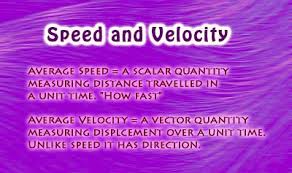
Banner 3
DISTANCE AND DISPLACEMENT

- Distance is scalar Quantity
- Displacement is a vector Quantity
- Displacement is speed in a given
direction
CONTACT AND NON CONTACT FORCES
Force is push or pull on an object that causes an object due to
interaction with another object that causes an object to:-
a) change speed
b) Change direction
c) change shape
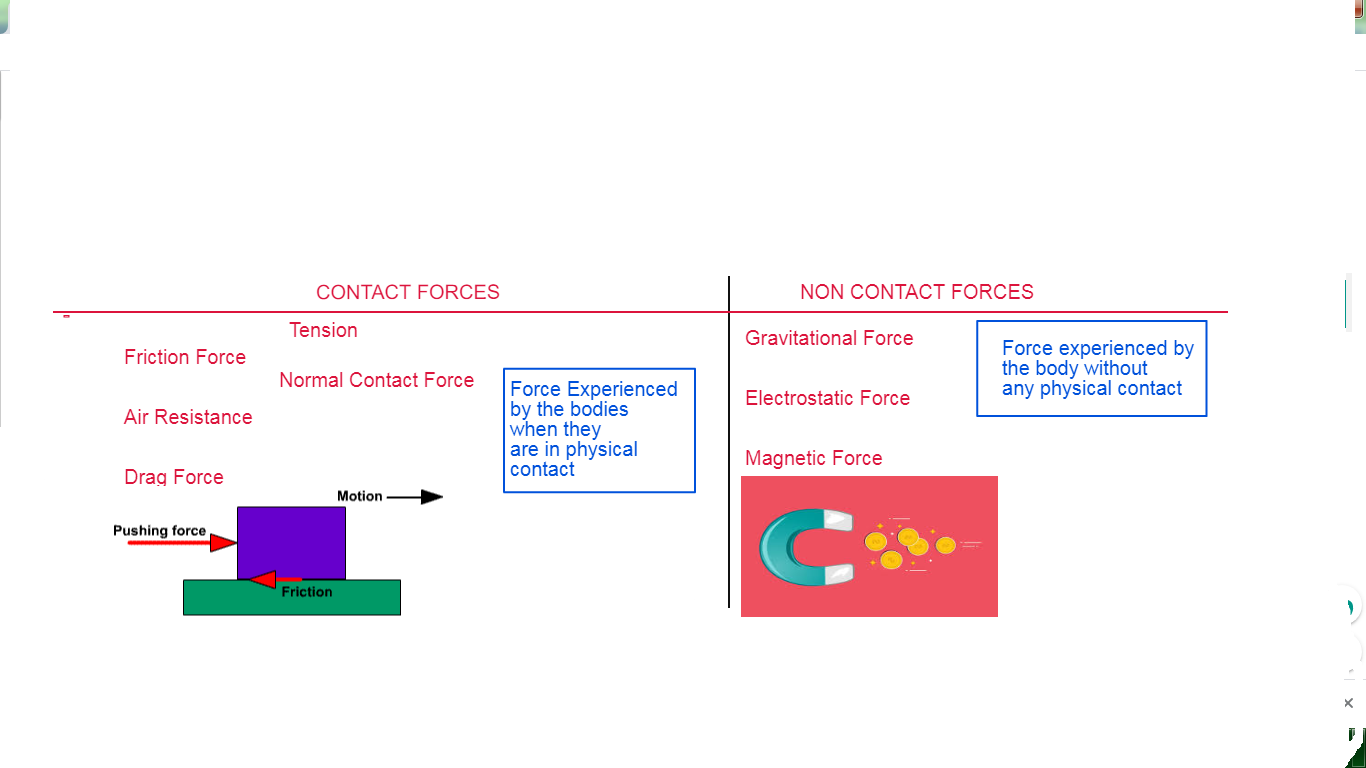
FRICTION FORCE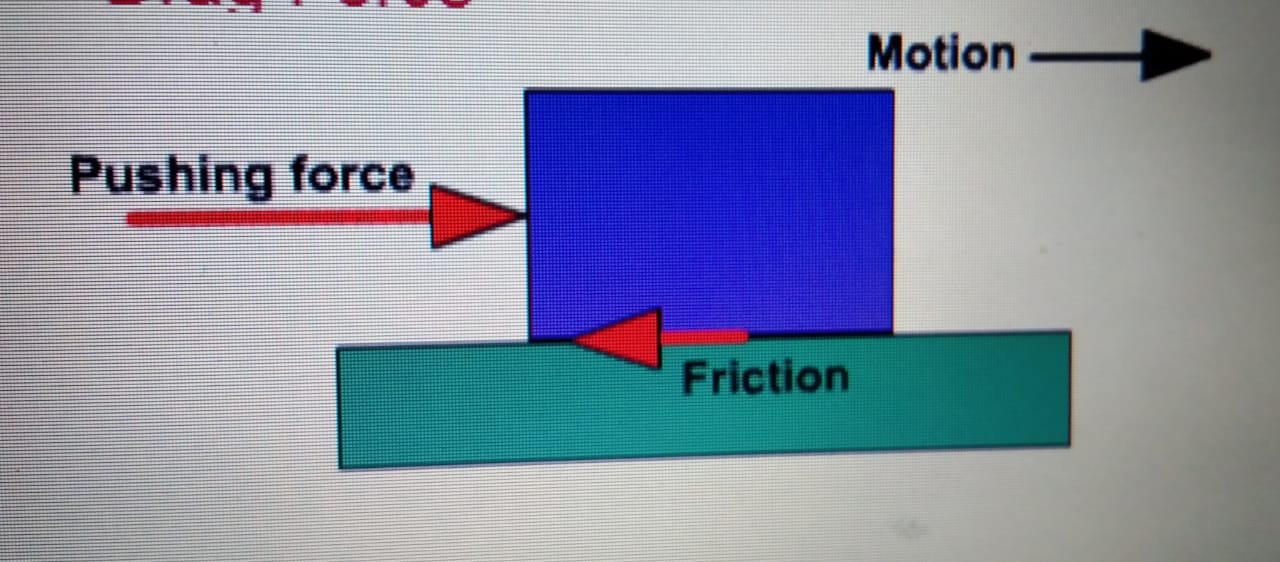
It is a necessary evil
Friction is a contact force that opposed motion between the
two surfaces that are in physical contact.
- It is a resistive force
- It happens in the opposite direction of motion.
a) It helps to light a matchstick.
b) The friction between the tyres and the
roads prevent the vehicle to slide.
a) It can cause wear and tear of machines
b) It can cause wear and tear of tyres
NEWTONS THIRD LAW OF MOTION

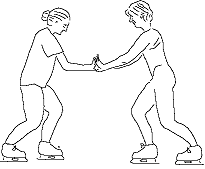
THE SKATERS MOVE TOWARDS EACH OTHER
AS THEY PULL ON EACH OTHER WITH EQUAL
AND OPPOSITE FORCE
RESULTANT FORCES


Net force = 0 N ( forces are balanced)
The body will stay at rest
It is the total force that acts on the body. It is the sum
of all the forces that acts on the body .
The resultant force decides the speed and the direction
of the body.
BALANCED
If the resultant force is zero
- If the forces are balanced and
the body is at rest then it will
stay at rest. - If the forces are balanced and the
body is moving it will keep on moving
with the same speed and direction
UNBALANCED
If the resultant force is
non zero
The body will
move in the direction
of resultant force.
Banner 4
NEWTONS FIRST LAW OF MOTION
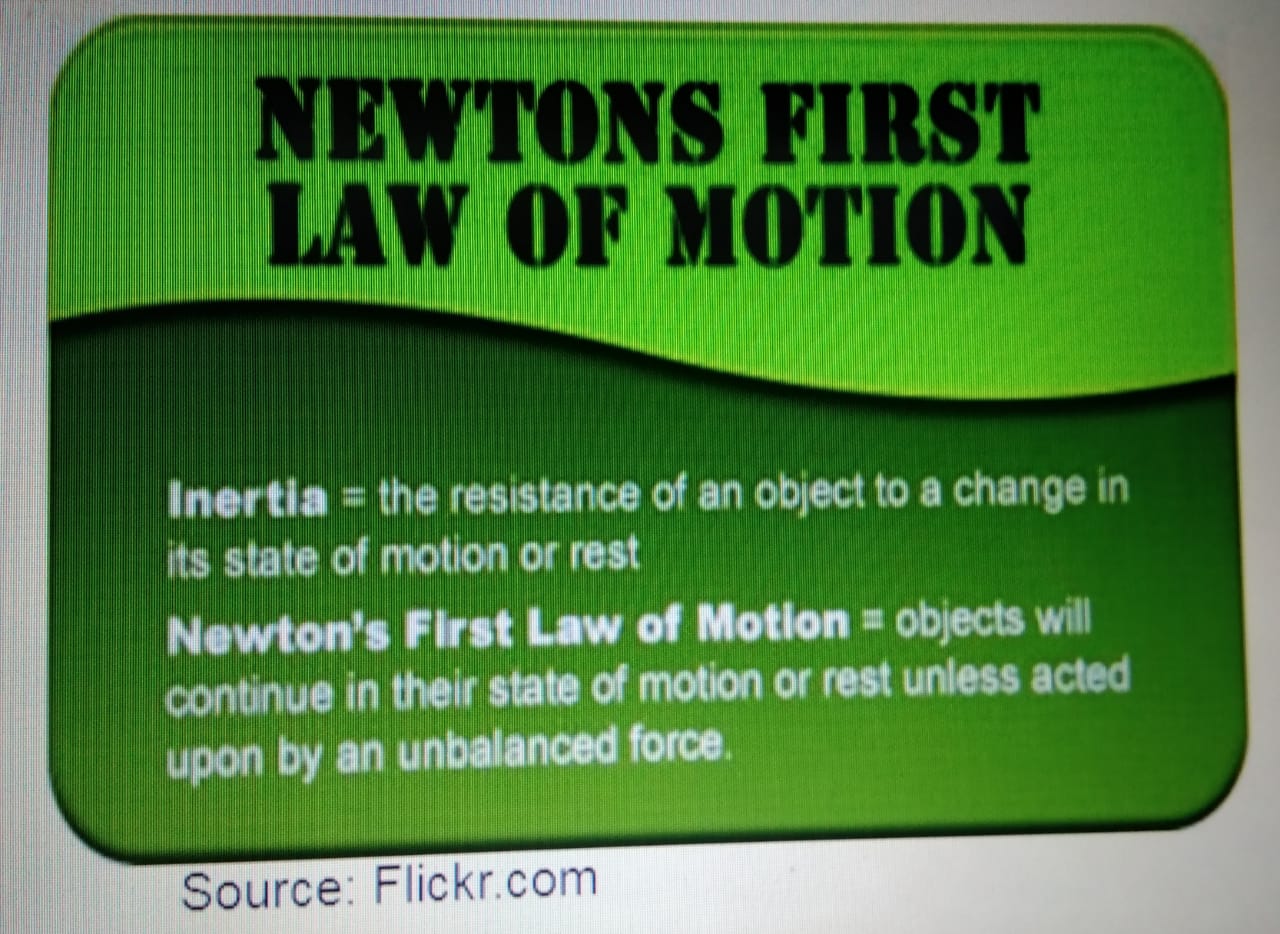
If an object is at rest it will remain at rest
If an object is in motion it will continue to move with the same
speed and direction unless no resultant force acts on it.
If the resultant force is non zero or unbalance the object will
move or change speed or direction.
MOMENTS
It is the turning effect of force.

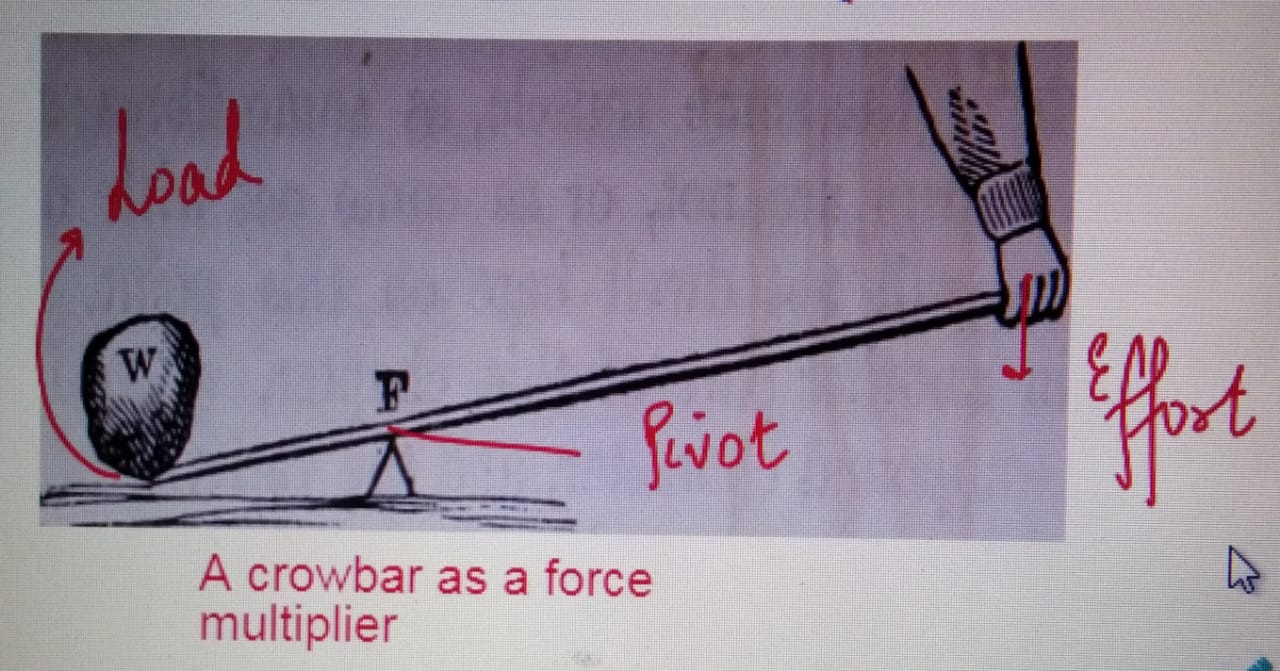
MOMENT =. Force. X Perpendicular distance
from the pivot
Nm = Nxm
Greater distance from the pivot increases
the moment or the turning effort
so a small effor can lift a heavy load.
MOMENT QUESTIONS
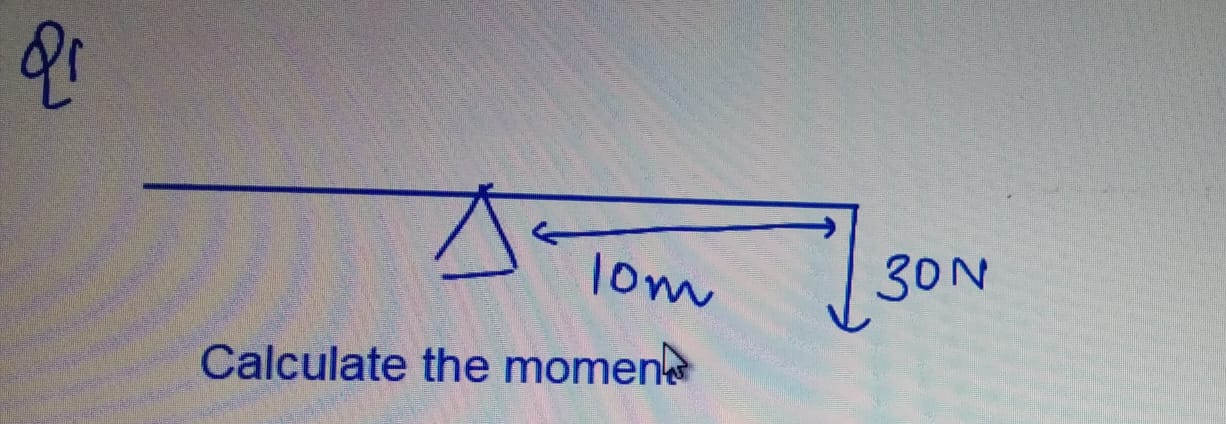
Moment = Force X distance
= 30 X 10
= 300 Nm
Q2 The moment of a spanner is 50 Nm.
Calculate the force acting at a distance of
10m from the pivot.
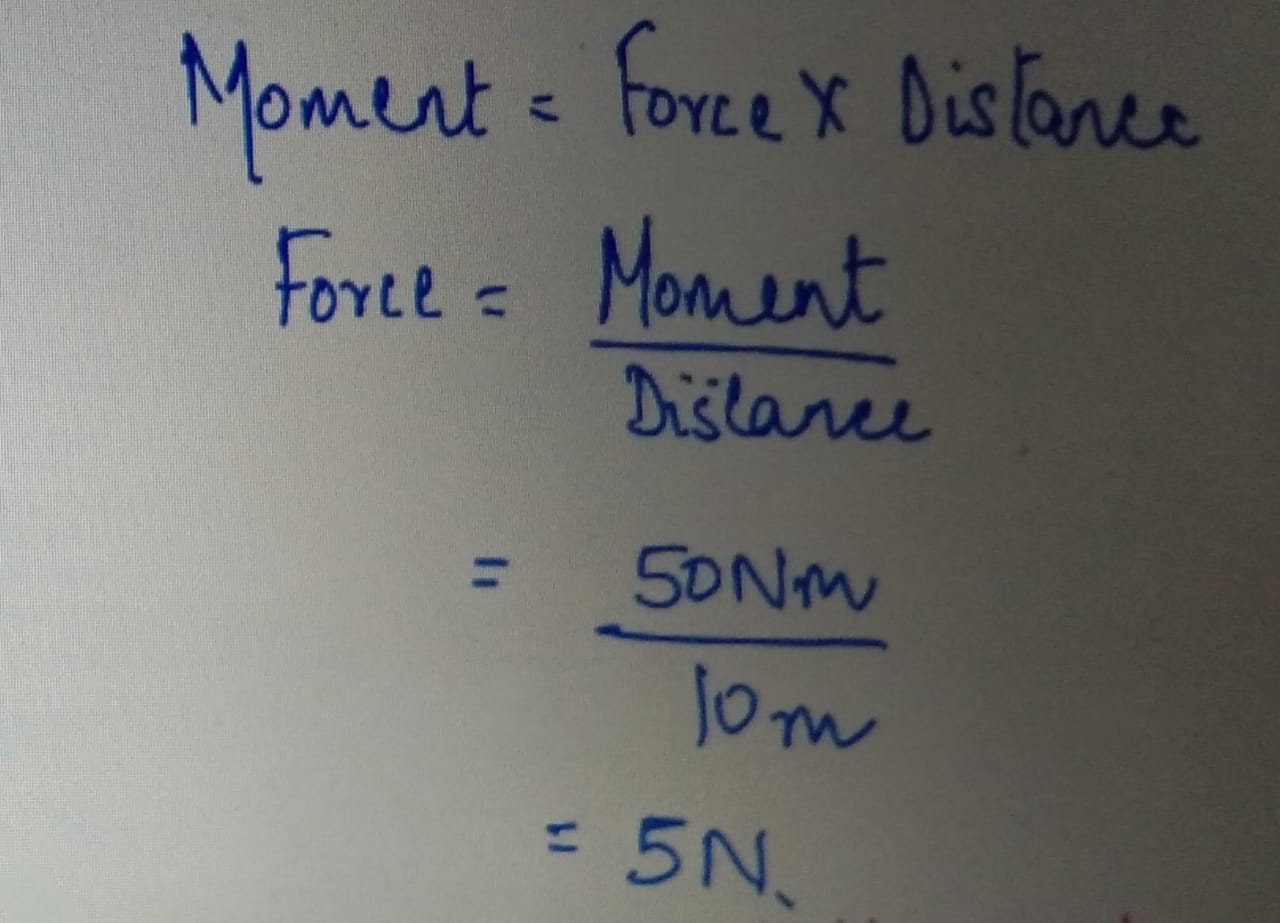
LEVERS AND GEARS
Simple Lever and Force Multipliers

In all these levers, the turning effect of force is greater by increasing the distance of effort
further away from the pivot. It increases the turning effect and multiply the force with a
small effort.
Banner 5
GEARS
GEARS TRANSMIT TURNING EFFECT OF
FORCE
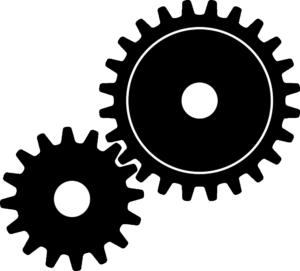
- Gear A Connected to the engine
- Smaller radius
GearB
- Bigger radius
- Connected to Wheels
At the Point of Contact they exert equal and opposite force.
Turning effect is greater due to greater radius .

Low gear
- Low speed and high turning
effect - small gear wheel run a bigger
gear wheel - bigger wheel has greater turning
effect but slow speed
High Gear
- High speed and
low turning effect - large gear wheel run
a smaller gear wheel - small gear wheel force
acts near to the shaft it
run faster with a high speed
but lower turning effect
Baneer 6
MOMENTS AND EQUILBRIUM
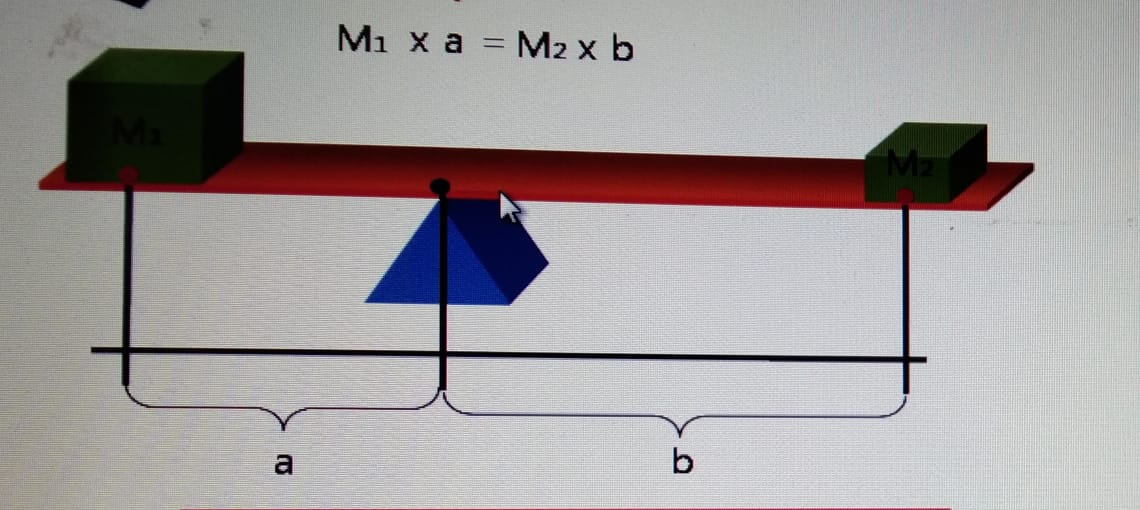
The sum of clockwise moments=
The sum of anticlockwise moments
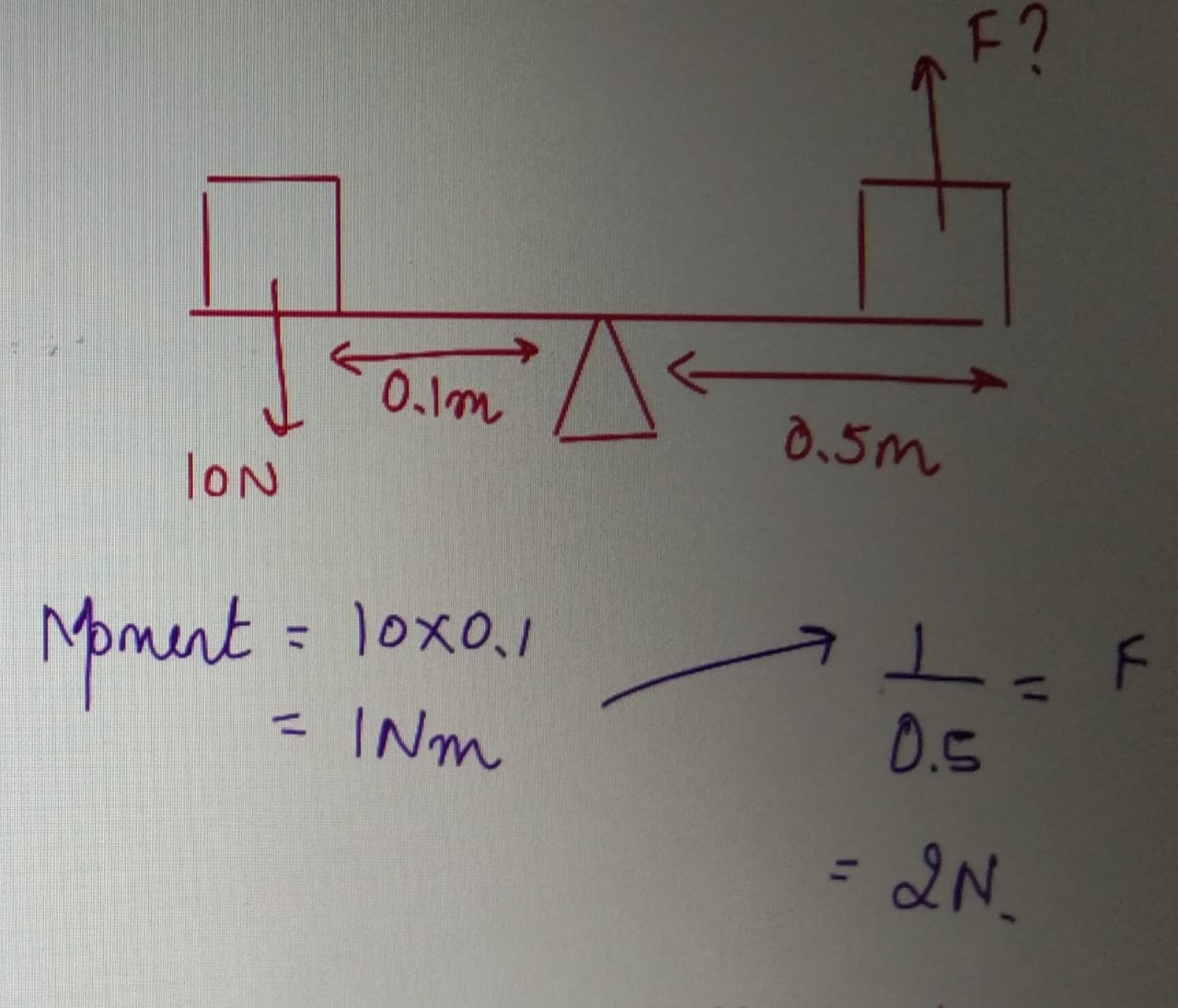
Banner 7
WEIGHT OF THE BEAM
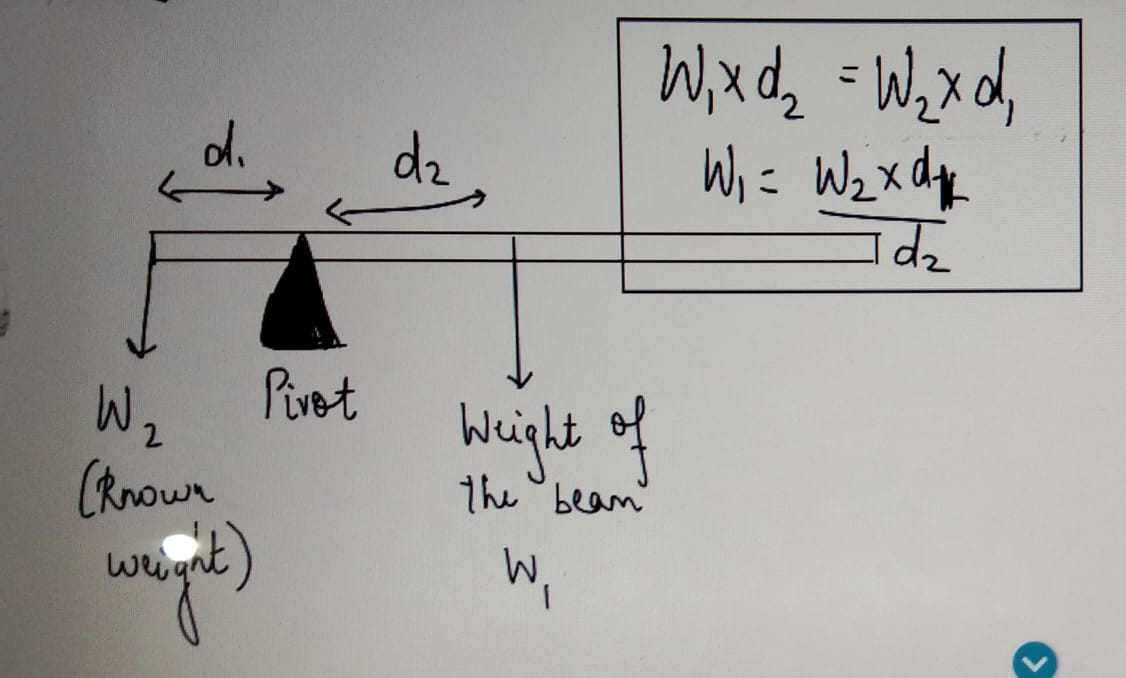
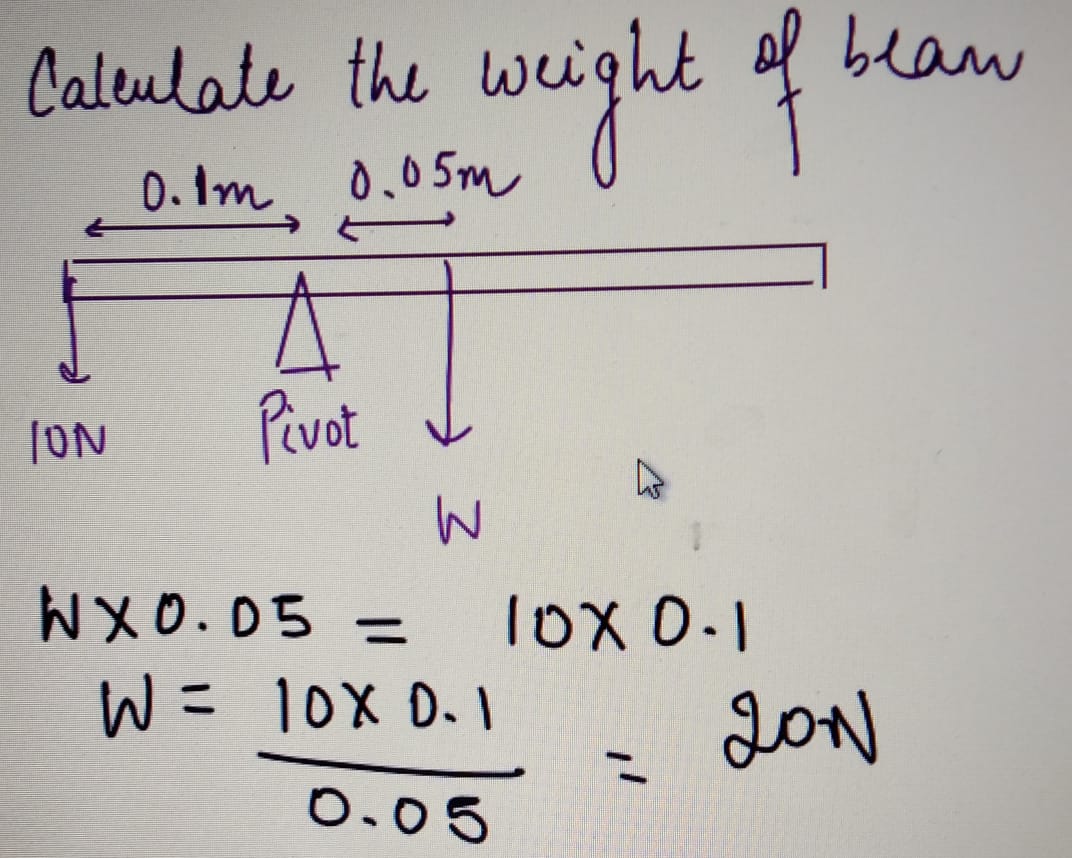
CENTRE OF MASS
It is the point at which the entire mass of the object
can be thought as being concentrated.
CENTRE OF MASS FOR SYMMETRIC OBJECTS

- It is along the point of symmetry
- If there more line of symmetry the centre of mass
is at the intersection of lines of symmetry
SUSPENDED OBJECT
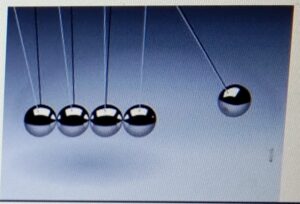
- The center of mass is directly below the point of suspension.
- When suspended, the weight will give the turning effect and
it will come back to its equilbrium position
Banner 8
SPEED, VELOCITY AND ACCELERATION
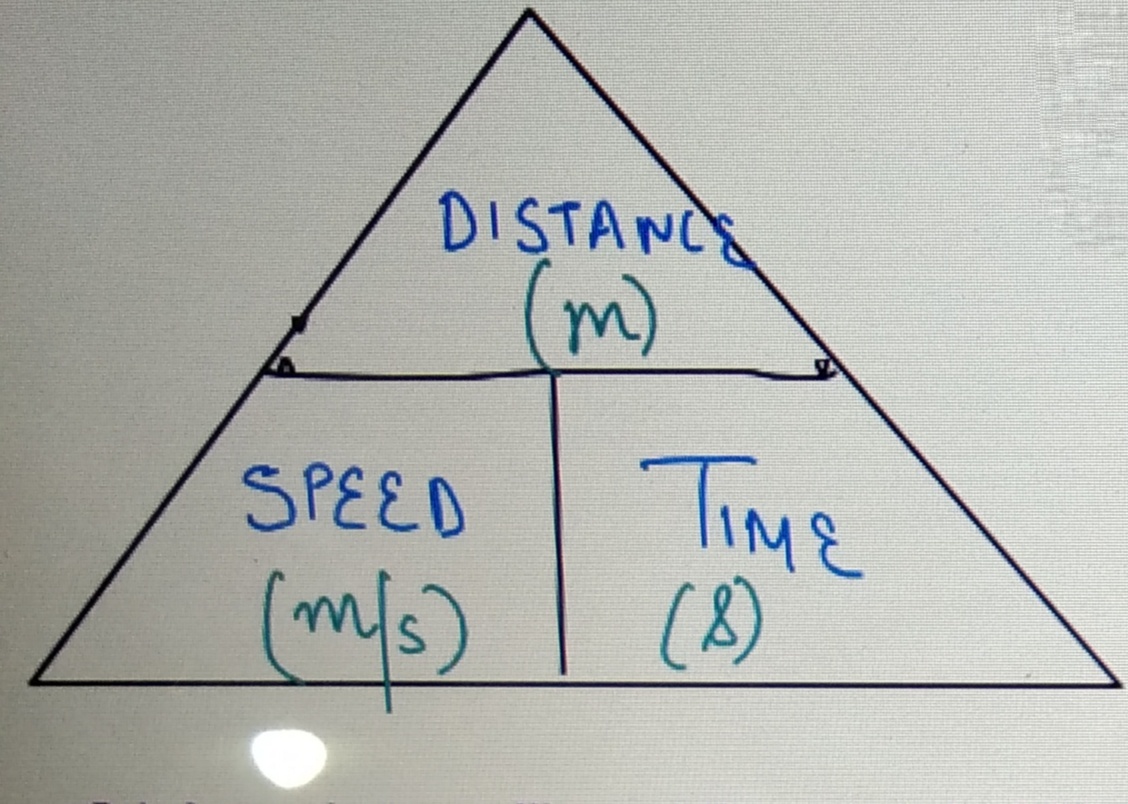
Q1 A car is travelling at the speed of 20 m/s.
Calculate the distance covered in 10 minutes
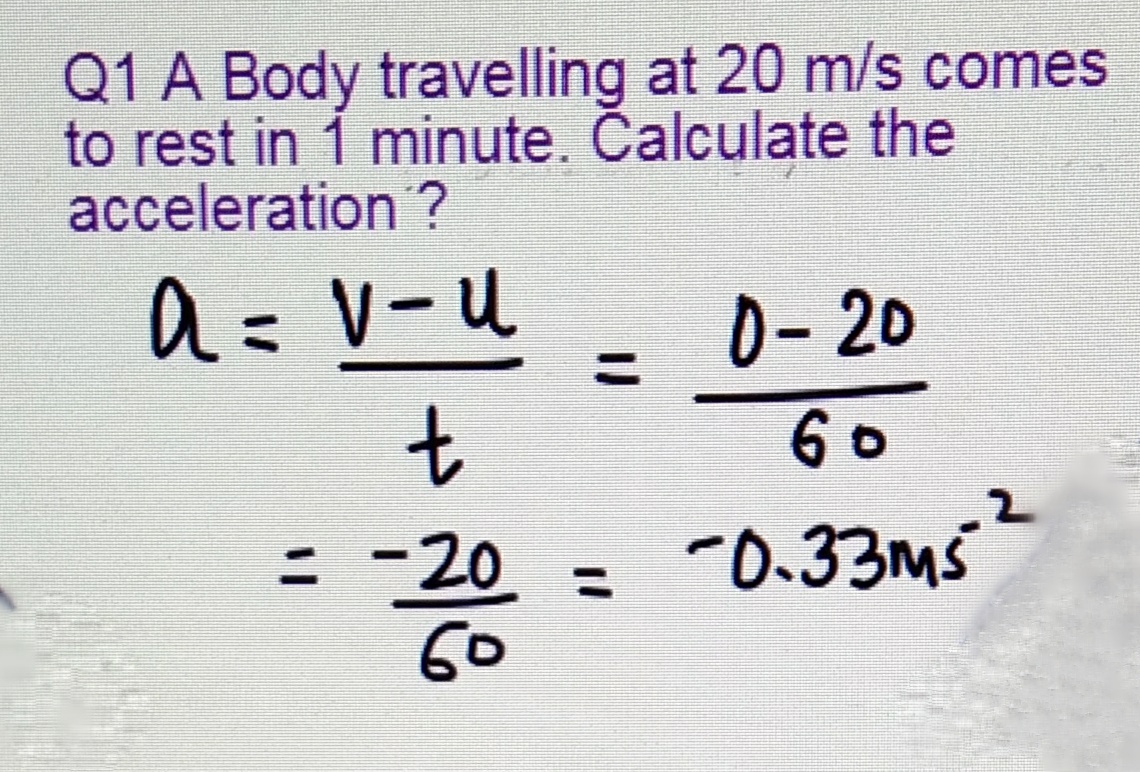
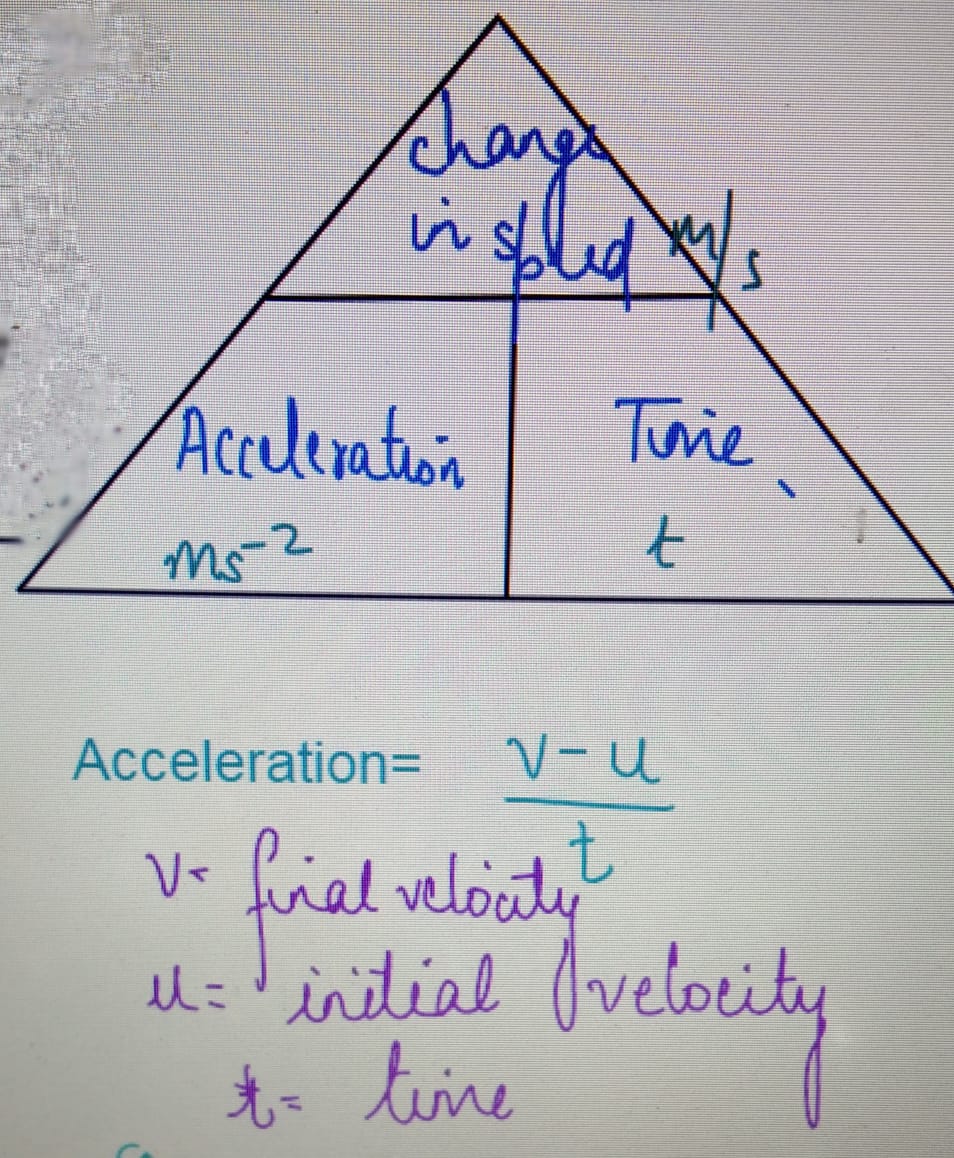
DISTANCE TIME GRAPHS
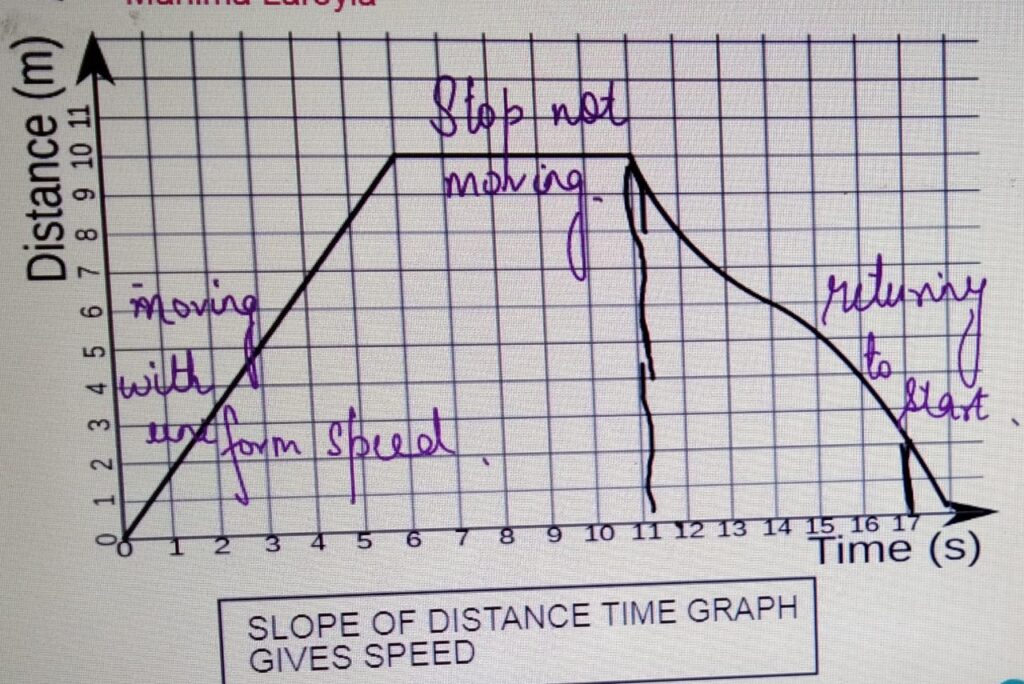
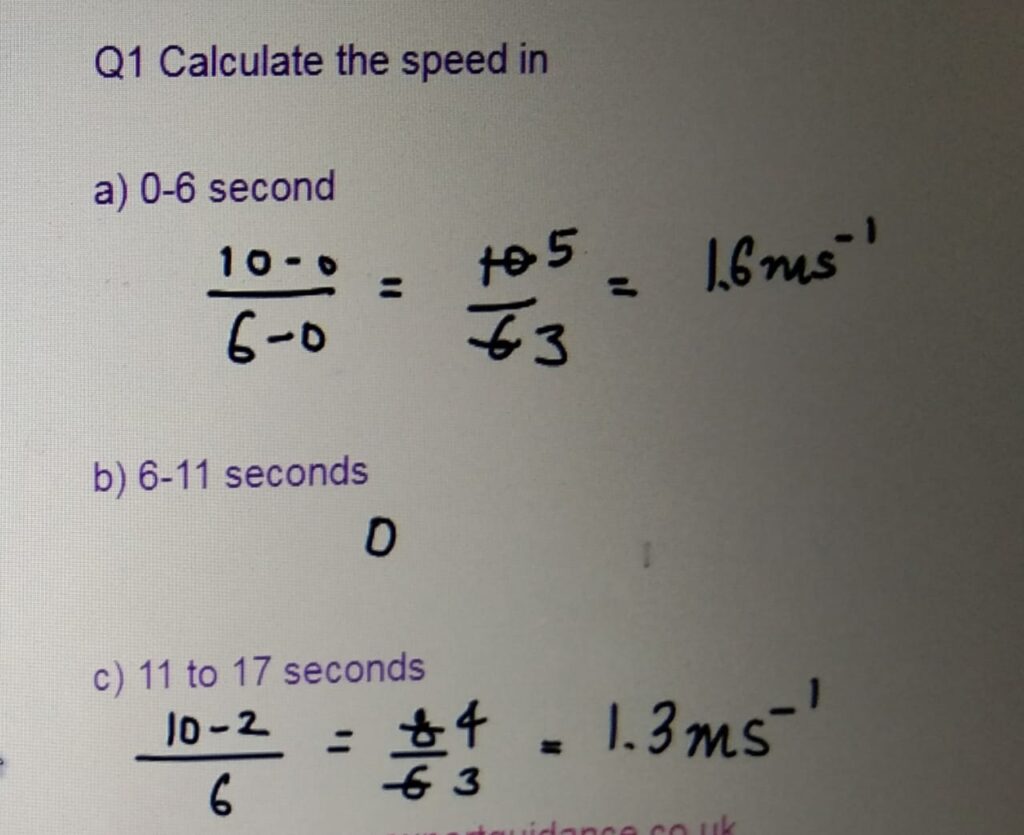
VELOCITY TIME GRAPHS
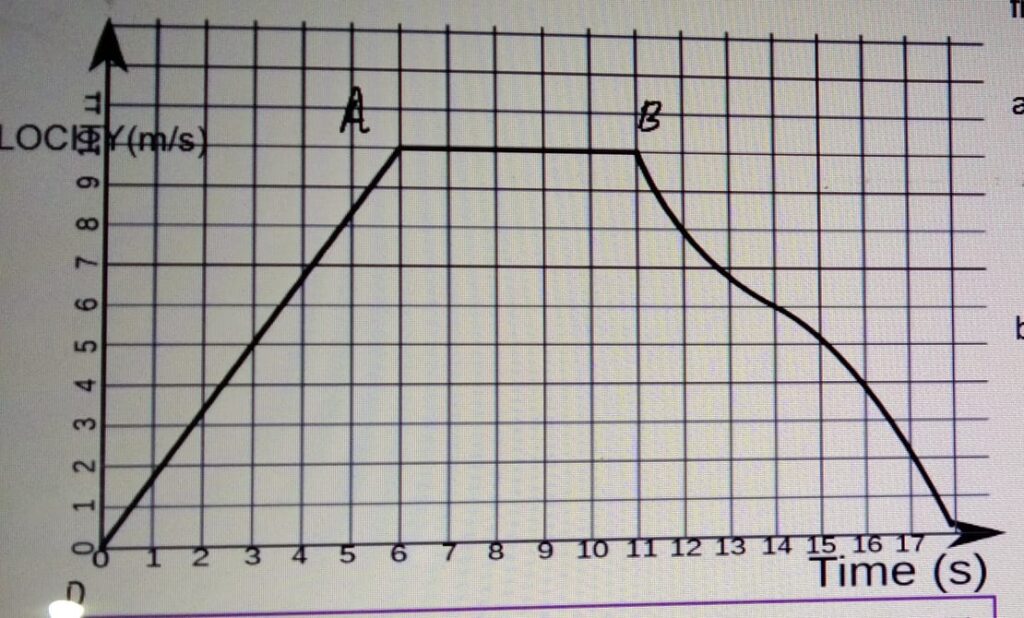 SLOPE OF VELOCITY TIME GRAPH= ACCELERATION
SLOPE OF VELOCITY TIME GRAPH= ACCELERATION
AREA UNDER THE GRAPH = DISTANCE
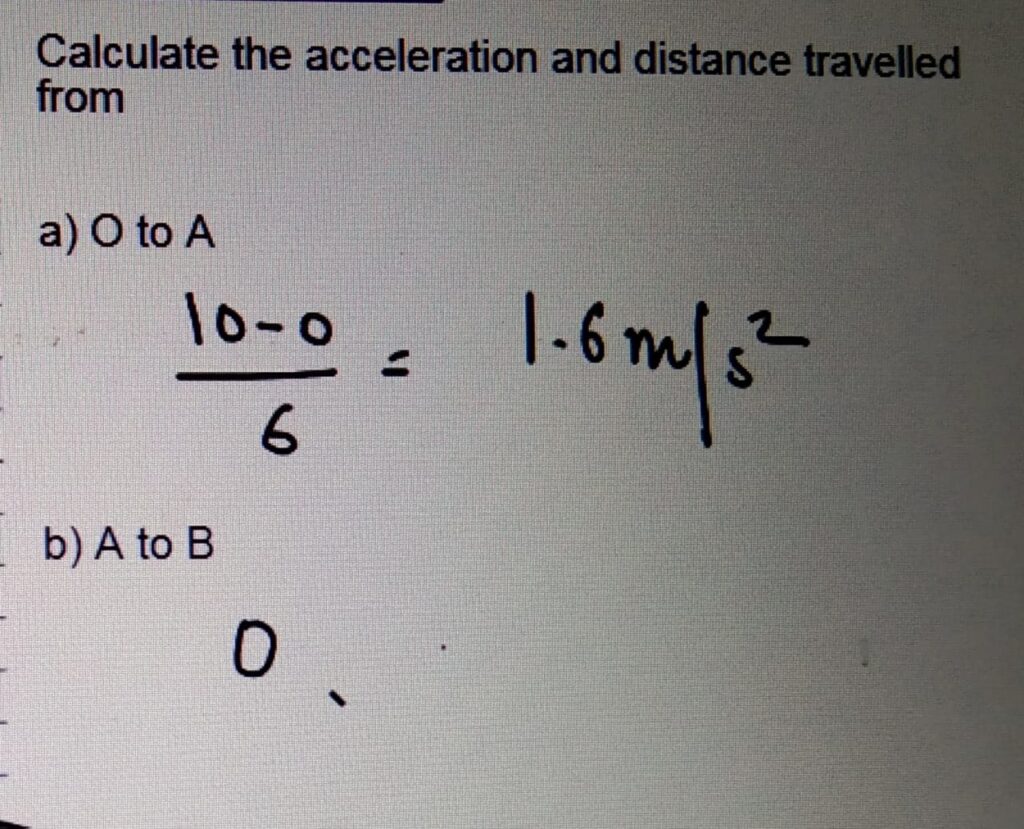
Banner 9
EQUATIONS OF MOTION
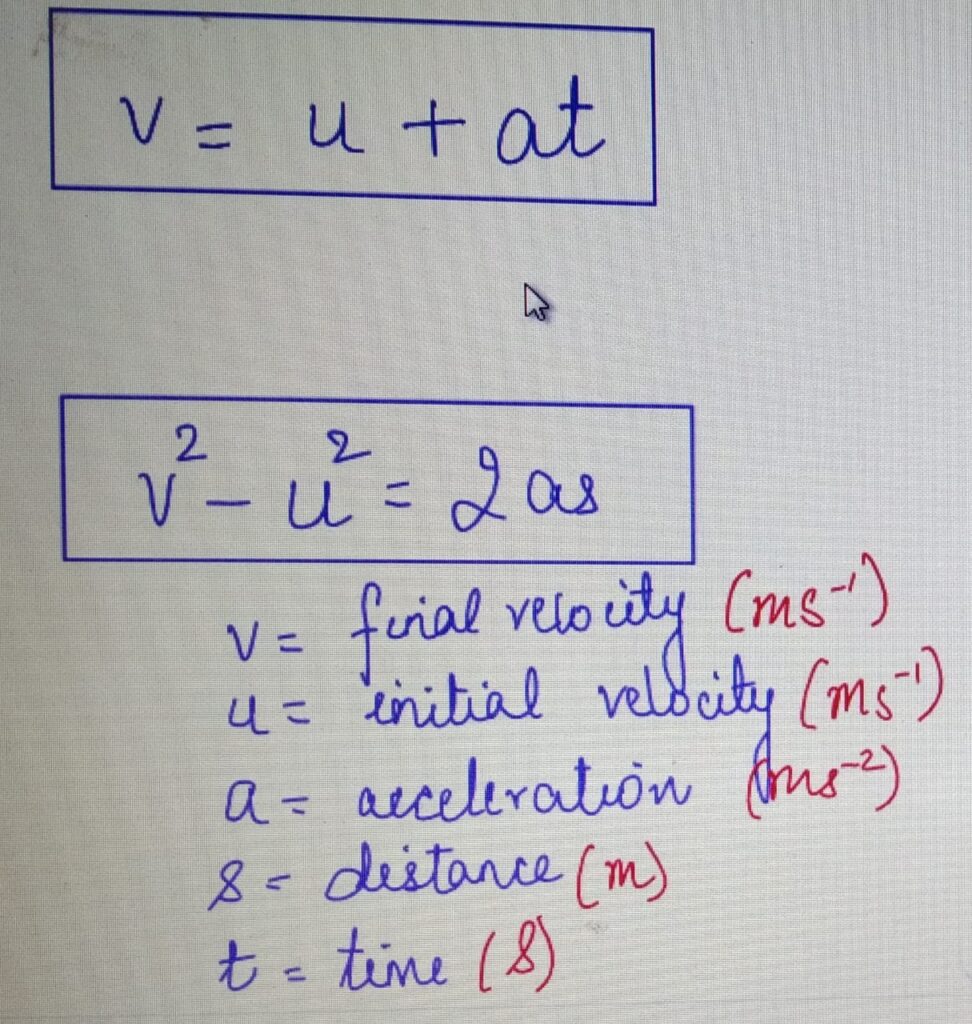
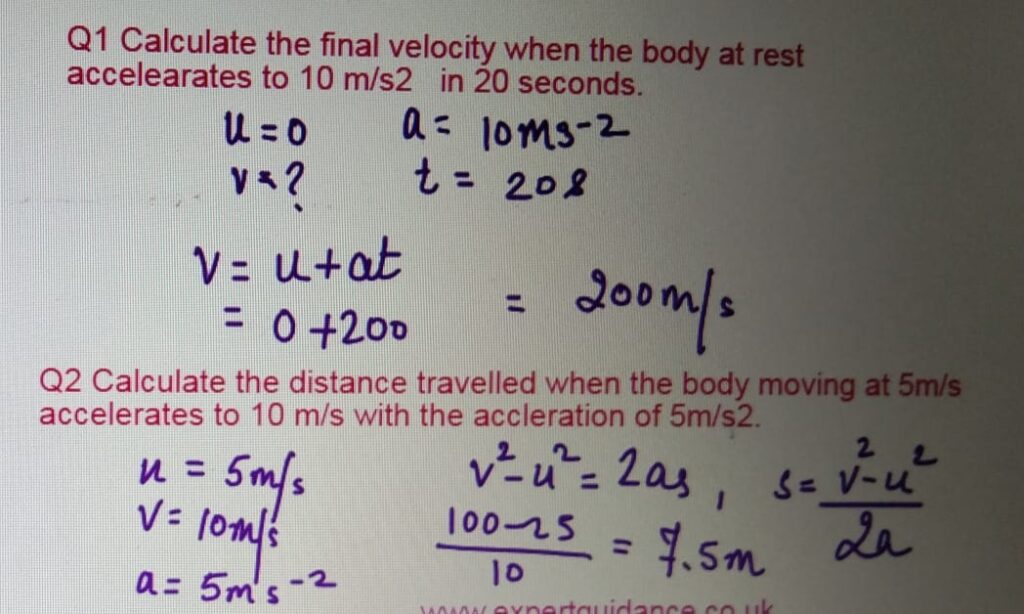
NEWTONS SECOND LAW OF MOTION

The acceleration of a body is
a) directly proportional to the resultant force
b) inversely proportional to the mass of an object
NEWTONS SECOND LAW OF MOTION
F = Mass x acceleration
SPEED UP
- The velocity of the object increases.
- The object accelerated.
- The resultant force is in the direction of motion.
SPEED DOWN
- The velocity of the object decreases .
- The object is decelerated.
- The resultant force is opposite to the direction of motion.
Banner 10
WEIGHT AND TERMINAL VELOCITY
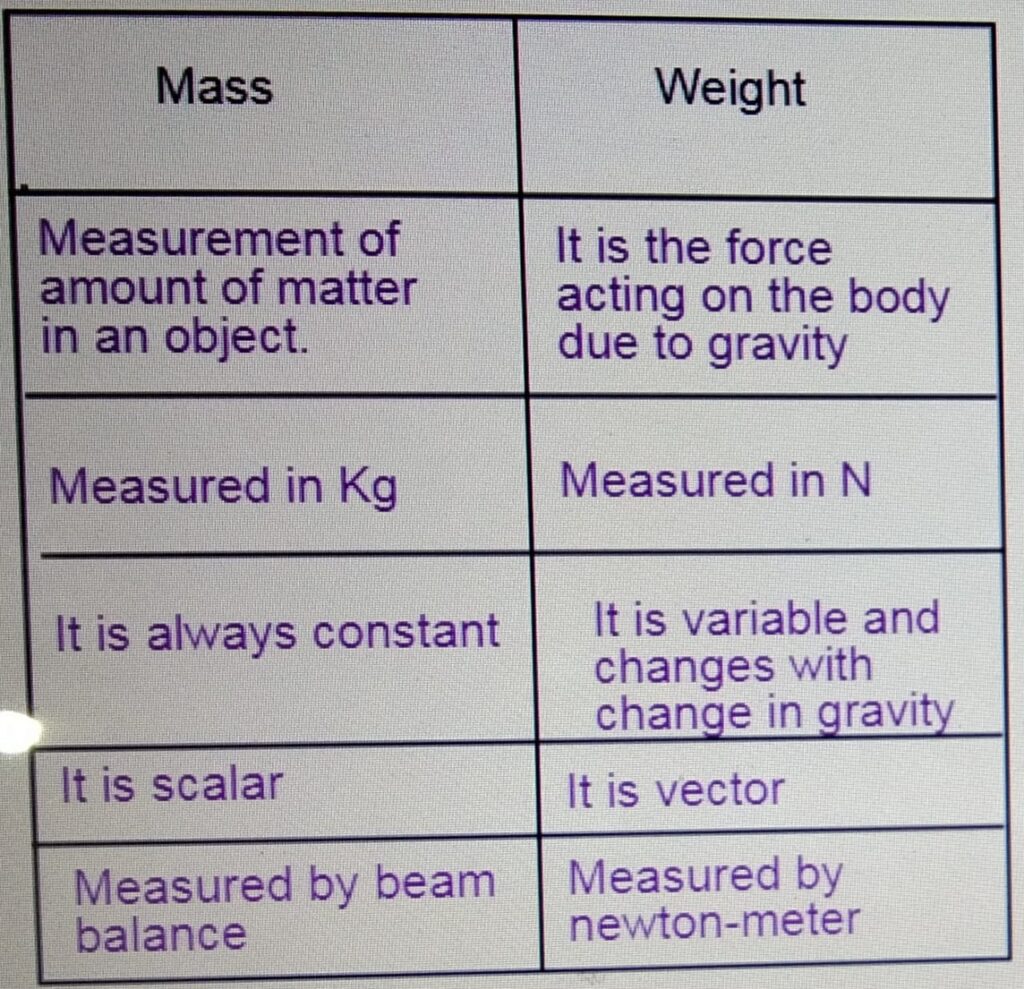
Weight (N) = Mass (Kg) x GRAVITATIONAL FIELD
STRENGTH (N/Kg)
g on earth = 9.8 N/Kg
or 10 N/Kg

FORCE AND WORK RELATIONSHIP
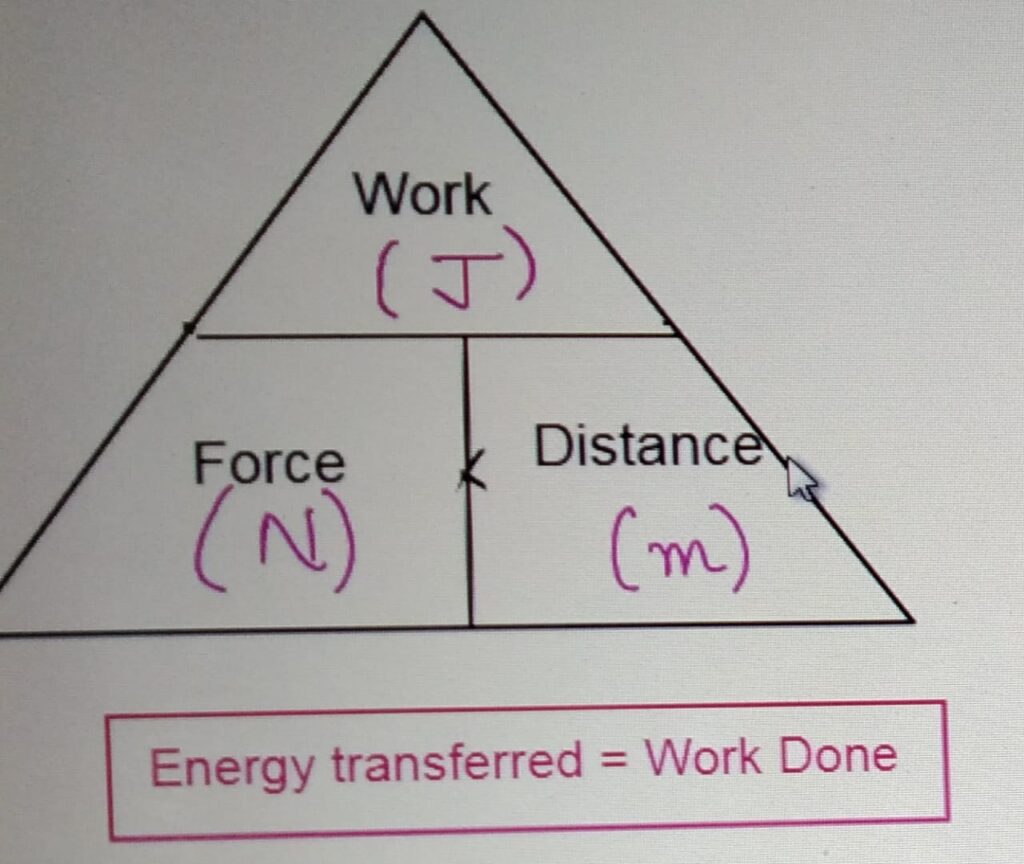
Q1 Calculate the work done when the force of 100 N moves the object
to a distance of 2m ?
W =F x S
= 100 x 2
= 200J
Q2 Calculate the force applied when 100 J of work is done to move
an object to a distance of 5 m ?

TERMINAL VELOCITY
It is the constant velocity of an object when
the resultant force is zero and the weight
of the body is balanced by the drag and
body has zero acceleration.
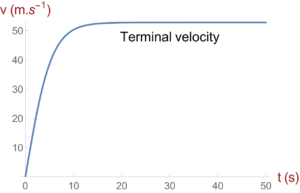
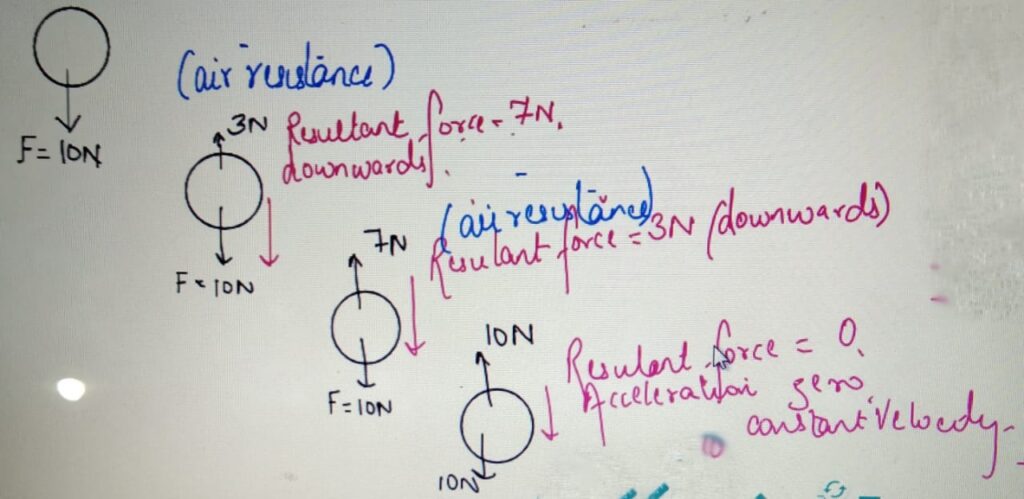
Terminal Velocity
TERMINAL VELOCITY IN FLUIDS

- In fluids, weight of the object is balanced by frictional force acting
upwards. - The body falls with constant velocity as net force or resultant force
acting on the object is zero, so the body falls at constant velocity
called the terminal velocity.
FORCES AND BREAKING
STOPPING DISTANCE
- The shortest distance a vehicle
can safely stop in. - It is the sum of thinking distance
and braking distance.
THINKING DISTANCE
The distance travelled by the body
during its reaction time.
= Speed x reaction time
Affected by tiredness, drug, alcohols
as all these affects the reaction time.
BRAKING DISTANCE
- Distance travelled by the body when
the braking force is applied. - Poor weather conditions, road conditions,
poorly maintained vehicles, speed of
the vehicle and the mass of the vehicle
affects the same.
MOMENTUM

Principle of conservation of momentum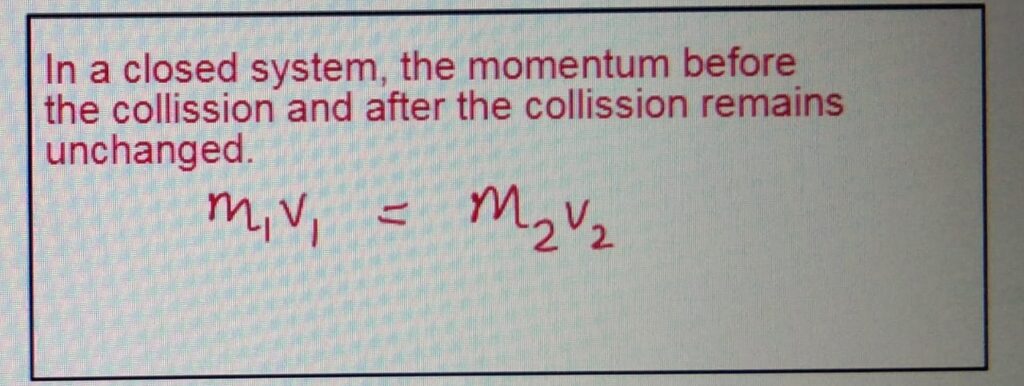
- Momentum is a vector quantity .
- It has a magnitude as well as direction.
- Greater the speed, greater the momentum.
- Higher the velocity, higher the momentum.
CONSERVATION OF MOMENTUM
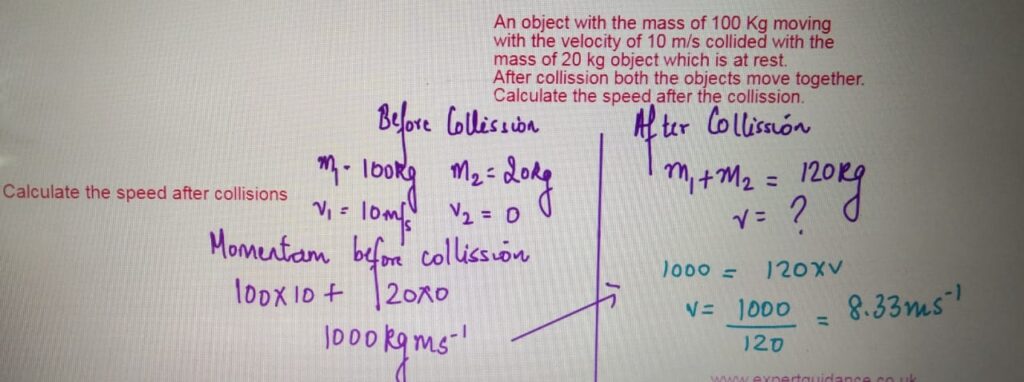
IMPACT FORCES
Relationship between force and momentum
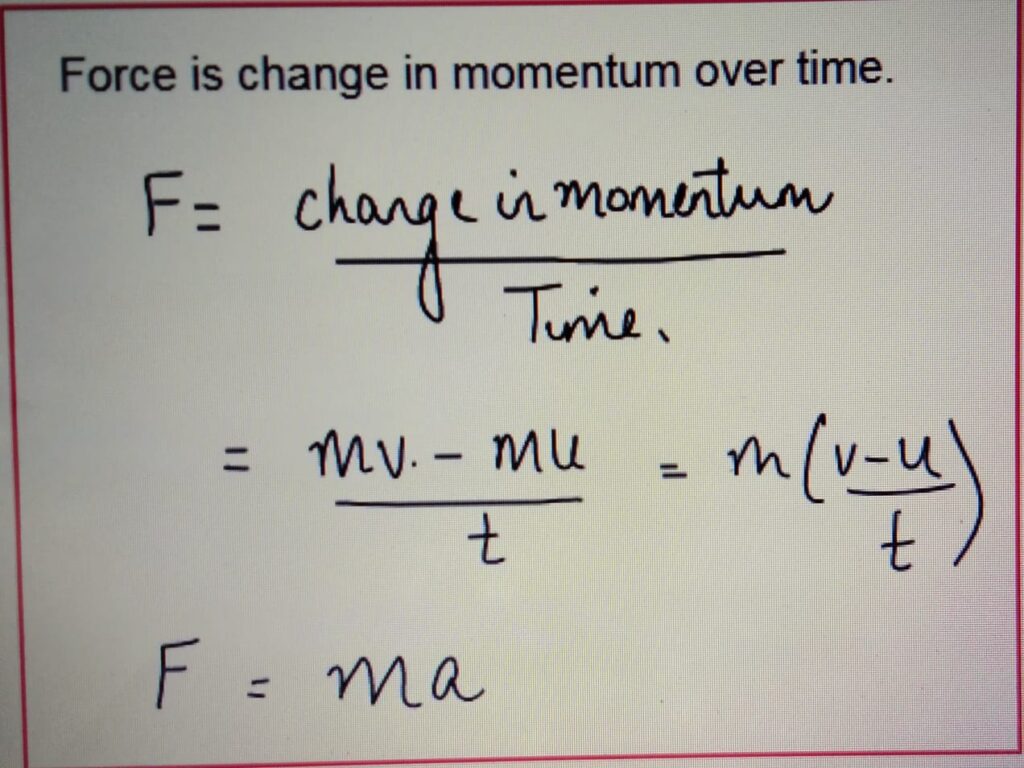
If we increase the time and the momentum is conserved,
the impact force can be decreased.
So greater impact time = reduced impact force
CAR SAFETY FEATURES
All these features increases the impact time, decreasing the momentum and thus
reduced the impact force.
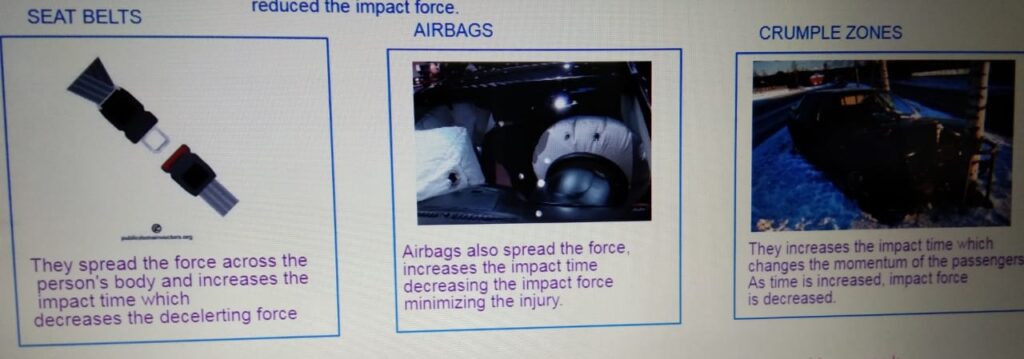
FORCES AND ELASTICITY
Effect of force on elastic objects:-
Change shape or deformation by
- Bending
- Stretching
- Compressing
Elastic Deformation
Object regains its original shape when
the force is removed like stretched rubber
band.
Inelastic Deformation
Object that does not gain its original shape
and changes shape permanently.
Example: overly stretched rubber.
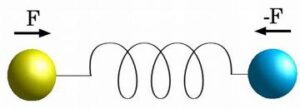
Banner 11
FORCES AND ELASTICITY
HOOKE’s LAW
Force on a spring is directly proportional
to the extension until it reaches its
limit of proportionality.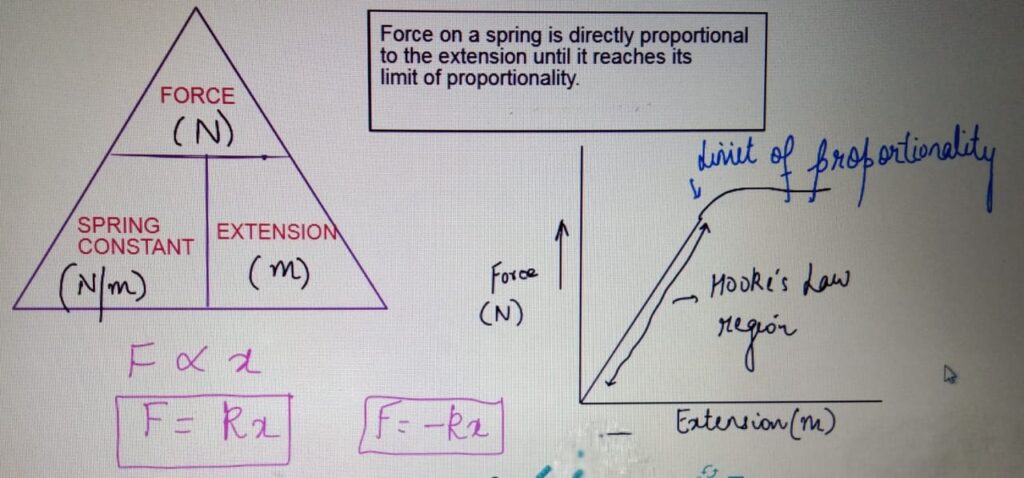
FORCES AND ELASTICITY
SPRING CONTSTANT
It is the measure of the stiffness of the spring.
Greater the spring constant stiffer is the object.
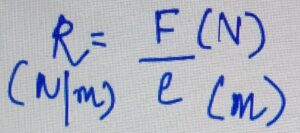
LIMIT OF PROPORTIONALITY
It is the point upto which the springs obeys
Hooke’s law. Beyond this point, the object
comes in the plastic region and no longer
obeys the Hooke’s law.
Q1 Calculate the force applied on the spring when
it is extended by 2m. The spring constant is 5N/m
F = k e
=5 x 2
=10 N
Q2 Calculate the spring constant of a spring when a force
of 50N extends the spring by 5 m.
K F/e
=50/2
=10 N/m
ELASTIC POTENTIAL ENERGY
E =1/2 k e 2
E = Elastic potential energy (J)
K = spring constant (N/m)
e= extention in the spring (m)
Elastic potential energy is the
energy stored in the spring when
it is stretched or compressed.
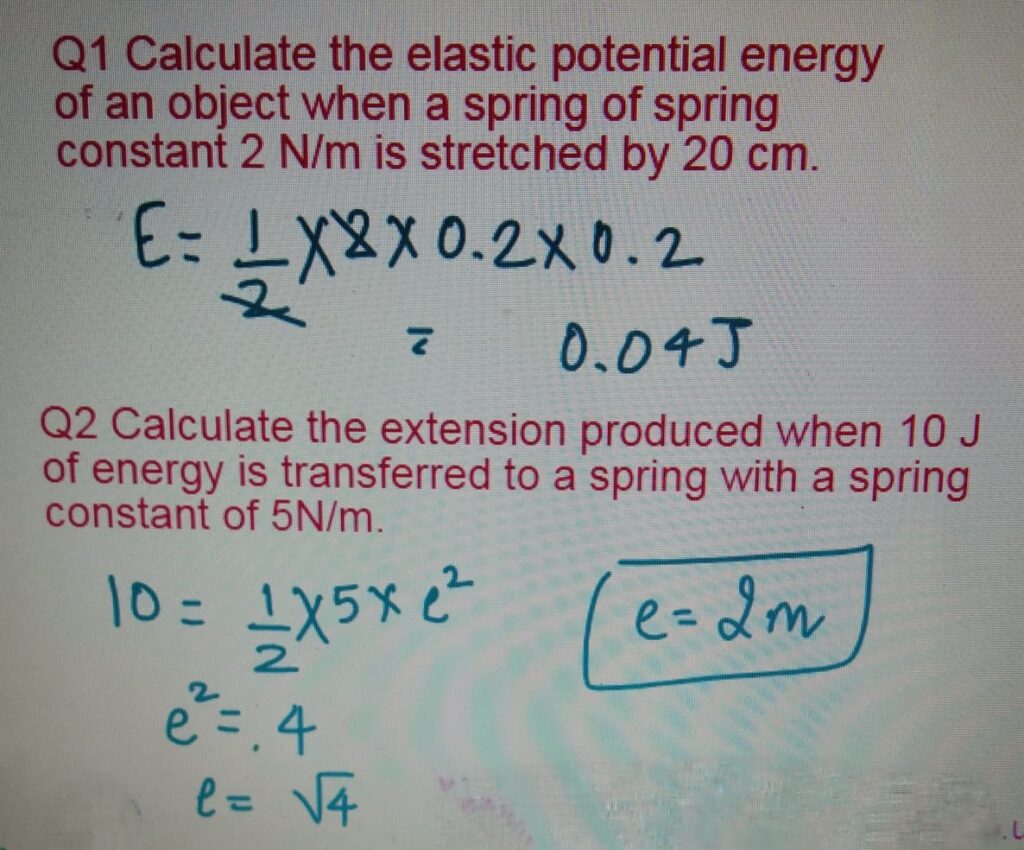
PRESSURE
- Greater the force greater the pressure .
- Smaller the area more will be the pressure exerted.
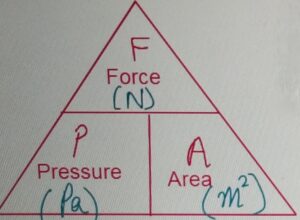
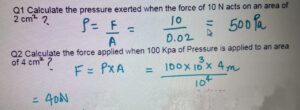
PRESSURE IN LIQUIDS
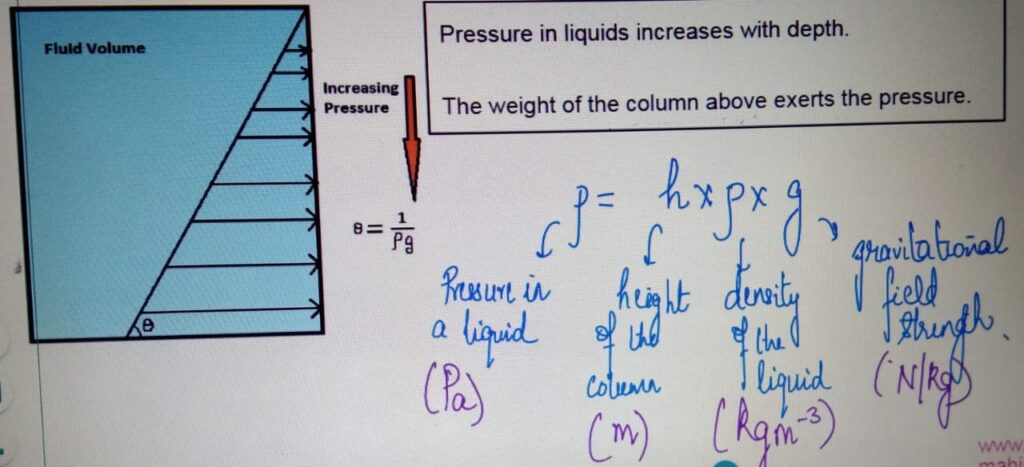
ATMOSPHERIC PRESSURE
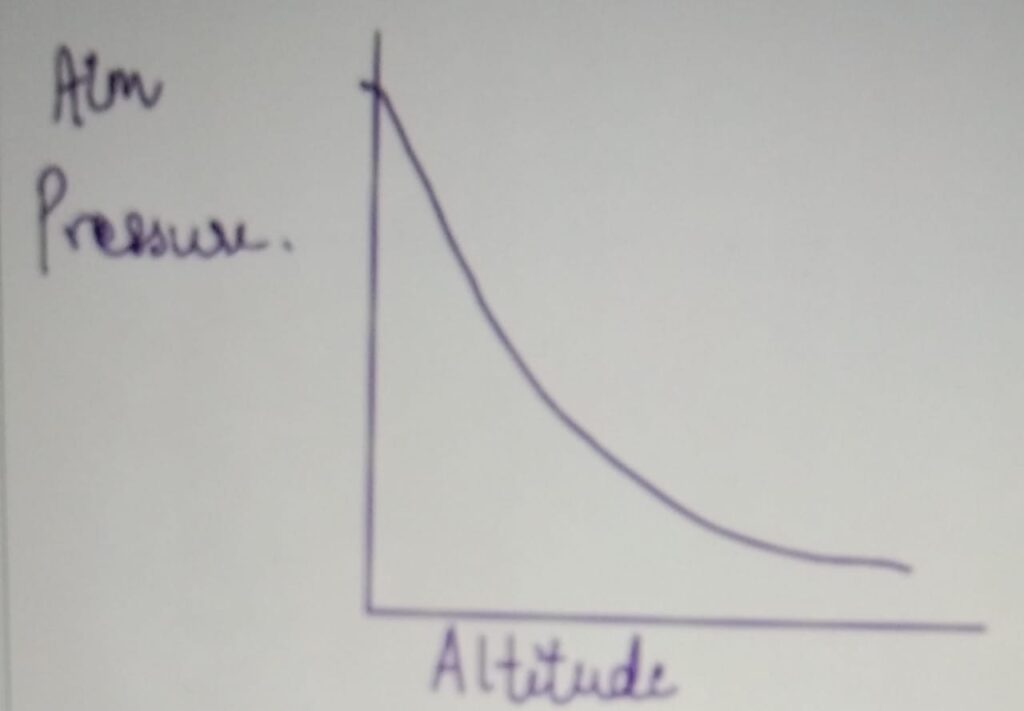
- Atmospheric pressure arises due to
collission of the airparticles with the
Earth’s surface. - It decreases with altitude as the number
of particles decreases with height
causing decrease in weight.
Banner 12
KEY TERMS
a) Forces :-Force is push or pull on an object that causes an
object due to
interaction with another object that causes an
object to:-
a) change speed
b) Change direction
c) change shape
b) Scalar :-Quantity that has magnitude only.
eg Length, Area, Volume etc .
c) Vector : Quantity that has magnitude
as well as direction. eg Displacement,
velocity, acceleration, momentum.
d) Friction :Friction is a contact force that opposed motion
between the
two surfaces that are in physical contact.
e) Newton First Law of Motion :-If an object is at rest it will remain at rest
If an object is in motion it will continue to
move with the same
speed and direction unless no resultant force
acts on it.
f) Newton Second Law of Motion:- The acceleration of a body is
a) directly proportional to the resultant force
b) inversely proportional to the mass of an object.
g) Newton Third Law of Motion:-For an every action force, there is an
equal and opposite reaction force.
h) Resultant Force It is the total force that
acts on the body. It is the sum
of all the forces that acts on the body .The
resultant force decides the speed and the
direction
of the body.
i) Free Body digrams are the graphical
illustration to represent all the forces
acting on a body.
j) Moments: It is the turning effect of force. It
is calculated by force multiplied by the
perpendicular distance from the pivot.
k) Levers : In all these levers, the turning
effect of force is greater by increasing the
distance of effort
further away from the pivot. It increases the
turning effect and multiply the force with a
small effort.
l) Gears : GEARS TRANSMIT TURNING EFFECT OF
FORCE.
m)Centre of Mass: It is the point at which the
entire mass of the object
can be thought as being concentrated.
n) Speed: It is the distance travelled divided by
the time taken.
o) Velocity: Speed in a given direction.
p) Acceleration: It is the change in speed over
time taken.
q)Weight: It is the force acting on the body due to gravity.
r) Terminal Velocity: It is the constant velocity
of an object when
the resultant force is zero and the weight
of the body is balanced by the drag and
body has zero acceleration.
s) Thinking Distance: The distance travelled by
the body during its reaction time.
t) Breaking Distance: Distance travelled by the
body when the braking force is applied.
u)Momentum: It is the product of mass and
velocity.
v) Conservation of Momentum: In a closed system,
the momentum before
the collission and after the collission remains
unchanged.
w) Hooke’s Law: Force on a spring is directly
proportional
to the extension until it reaches its
limit of proportionality.
Banner 12
Disclaimer:
I have tried my level best to cover the maximum of your specification. But this is not the alternative to the textbook. You should cover the specification or the textbook thoroughly. This is the quick revision to help you cover the gist of everything. In case you spot any errors then do let us know and we will rectify it.
References:
BBC Bitesize
Wikipedia
Wikimedia Commons
Image Source:
Wikipedia
Wikimedia
Commons
Flickr
Pixabay
Make sure you have watched the above videos and are familiar with the key definations before trying these questions. It is also good to time yourself while doing these questions so that you can work on the speed as well.
